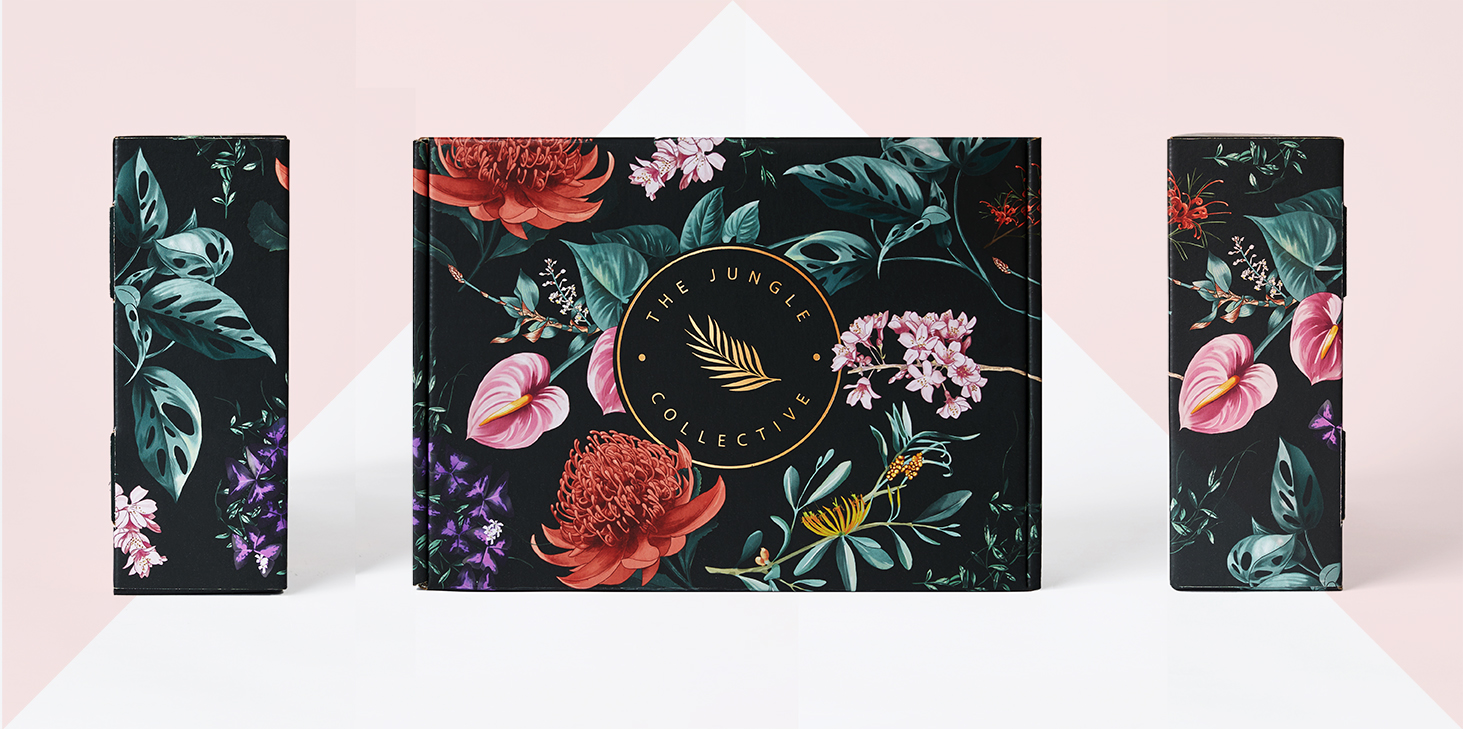
Congratulations on your recent Jungle Box purchase!
Time to lean back, put your feet up, play some feel-good Jungle Bangers & read all you need to know to keep your recent plant babies happy!
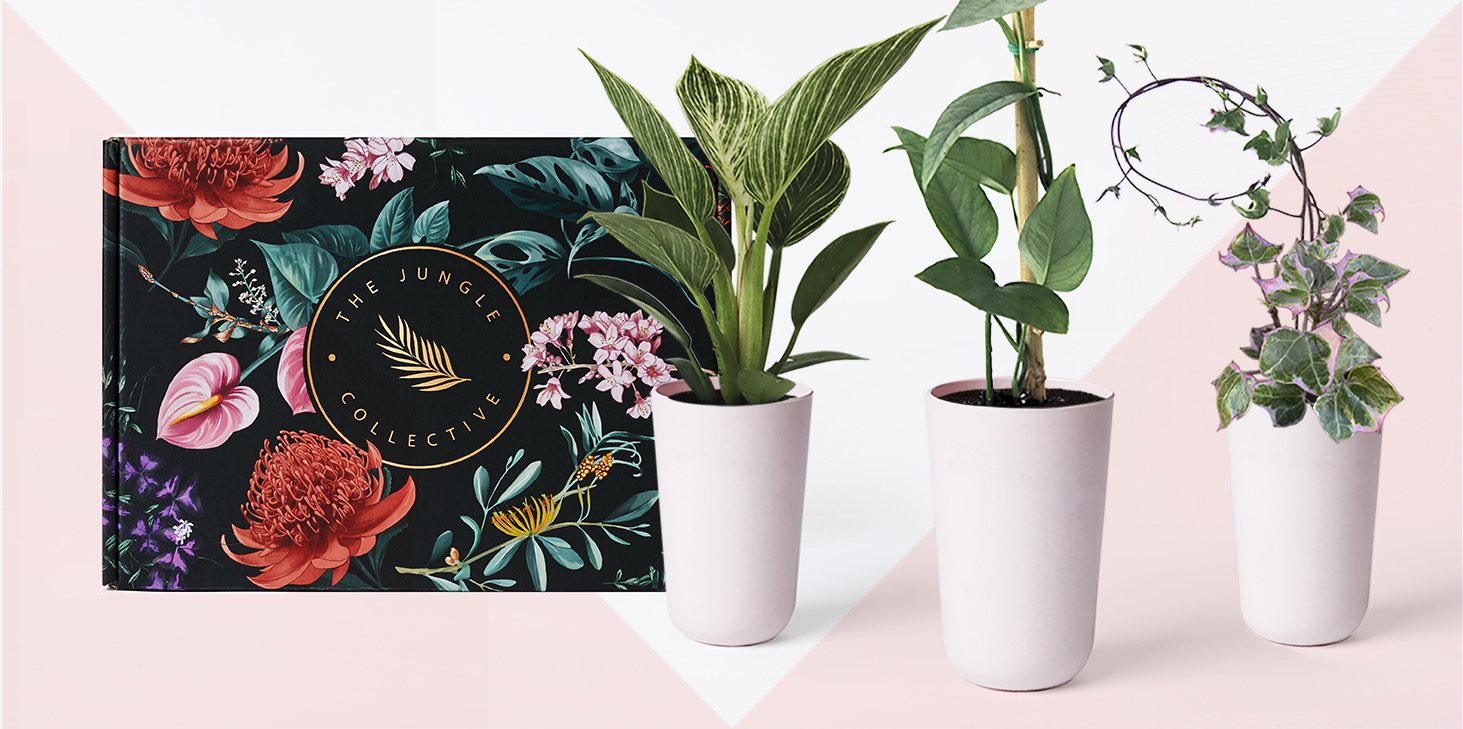
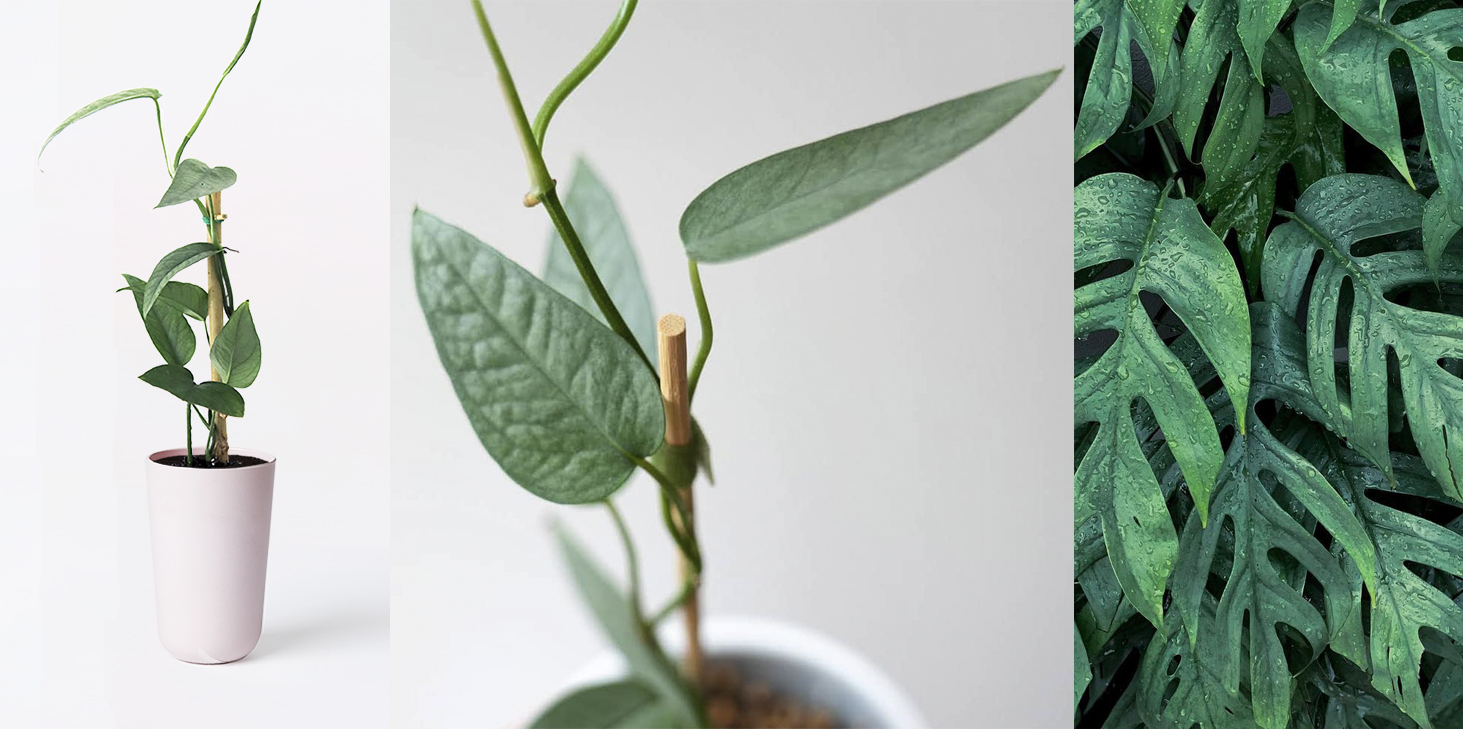
Epipremnum pinnatum is a very variable and widespread aroid species in tropical Asia. Cebu Blue is a form that comes from the island of Cebu in the Philippines. It is known as Blue Cebu or Blue Pothos due to the silver/blue/grey colour of its leaves. It is an evergreen tropical vine that is a reliable indoor plant.
It is an interesting plant because it has juvenile foliage and mature foliage. In the juvenile stage, the leaves are entire (i.e. no cuts or holes), up to 10cm long and with a silvery or blue cast to the leaves. The vines can drape beautifully in a hanging pot and the leaf form will remain juvenile. However, if you allow the plant to climb a moist totem, eventually new leaves will develop cuts and holes (known as fenestration) and more pronounced green colour and veining.
In nature, Cebu Blue is a climbing vine that attaches its roots to trees and grows upwards to seek brighter light in the canopy. It is subjected to regular cycles of rain and drying breezes and is fertilised by a dilute solution of nutrients washed from the decaying material on the tree.
To grow Cebu Blue to its best indoors, we need to simulate natural conditions as closely as possible viz. medium to bright indirect light, moderate humidity, regular wet/dry cycles achieved by a thorough watering after the soil has dried down a few centimetres. Fertilise fairly regularly with dilute fertiliser. Allow the plant to climb on a moss totem if you want mature foliage.
Cebu Blue is an easy plant to propagate by cuttings. Its primary pests in cultivation are mealybugs and spider mites.
Like other aroids, Cebu Blue is toxic to humans and pets due to calcium oxalate and calcium carbonate crystals.
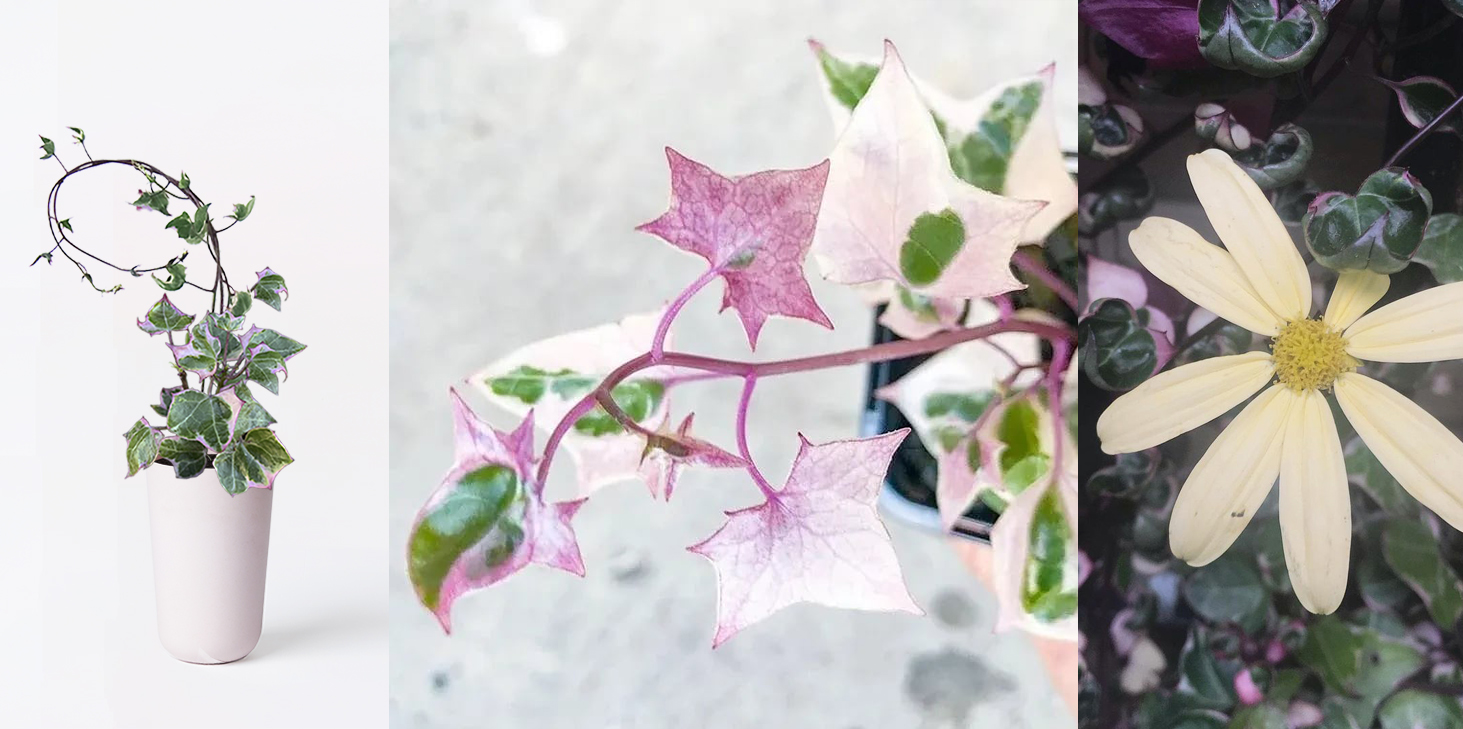
The first thing to know about this green, pink and cream variegated plant is that it’s actually a daisy, not an ivy, with pale yellow daisy-like flowers in summer. It is a semi-succulent, slender twining climber and can be trained into a striking columnar plant around a support, or left to trail in a hanging basket. This variegated form received a Royal Horticultural Society Award of Garden Merit in 2002.
It comes from the eastern part of Southern Africa on the margins of forests and thickets which tells us that it prefers bright light and can cope with drier conditions than are found within a forest.
When grown as an indoor plant, the stems may reach several meters in length. It is easy to clip and keep in whatever shape is desired, whether growing up a totem or cascading from a hanging pot.
Keep the plant in bright indirect light for the best pink colour of the leaves. Grow it in well-draining potting mix and allow the mix to dry down considerably before giving a thorough watering again. Keep the plant drier in winter. Fertilise while it is in active growth. It is not frost-hardy so if you grow it on a deck or balcony protect it from frost.
It can be attacked by spider mites, mealybugs and aphids.
It is only toxic to dogs, cats and humans when consumed in large amounts over a long period. Pyrrolizidine alkaloid poisoning is a long-term poisoning that results in liver failure. The bad taste means most animals will not eat much unless there is no alternative.
It can be an environmental weed in warm areas of the country so be mindful of how you dispose of cuttings.
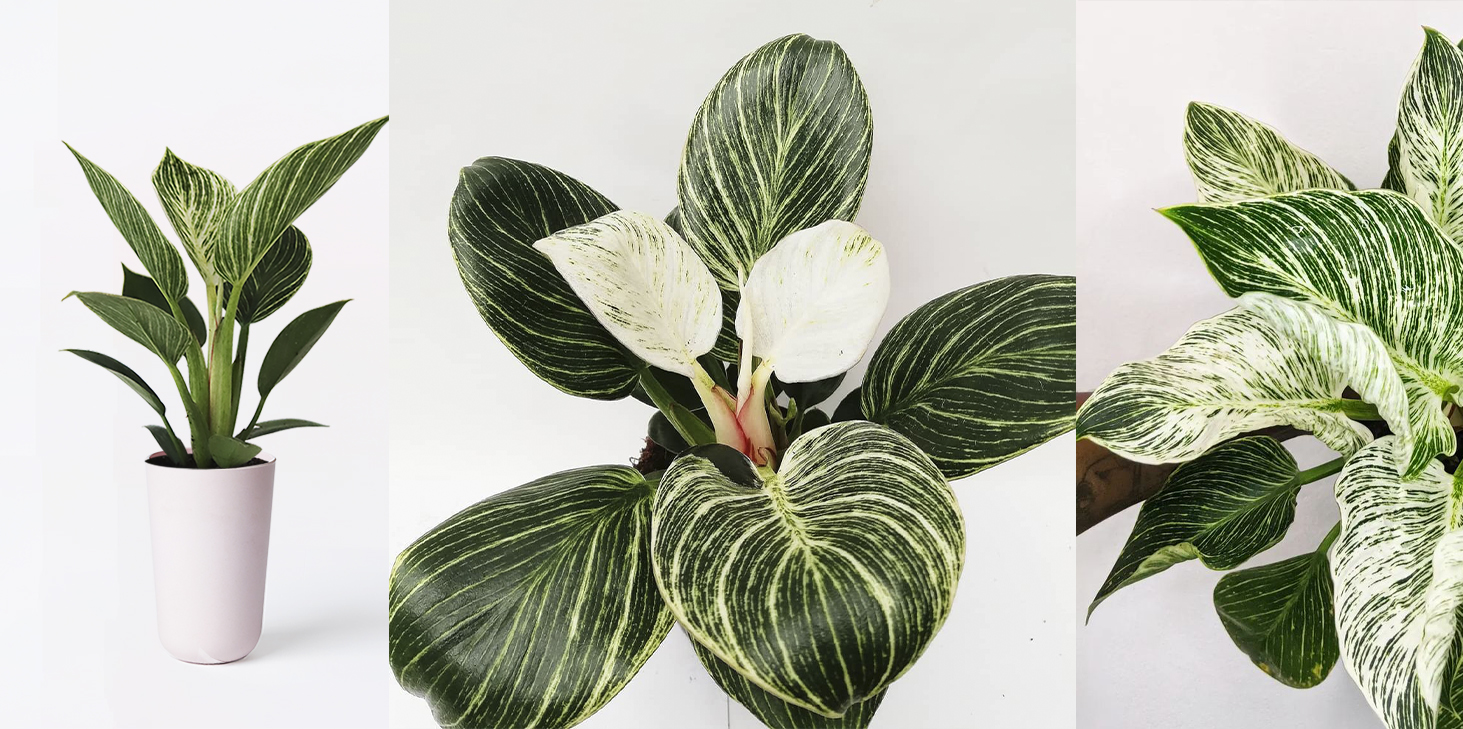
Philodendron Birkin is a slow-growing, upright (non-vining) philodendron that is very suitable for pot culture. It is known as a self-heading type because the internodes between the leaves are so short that the plant supports itself. It is an excellent plant for the table or bookshelf, but eventually will be a great floor specimen. It is reported to be a rare mutation of Philodendron Rojo Congo that resulted in the characteristic variegation pattern. [Rogo Congo is the cross between Philodendron ‘Imperial Red’ and Philodendron tatei] Although Rojo Congo has dark green leaves with a coppery cast and reddish petioles and stems, Birkin has dark green leaves and stems with white/cream/pale yellow stripes along the leaf veins.
The species from which it is derived come from the floors of humid forests of northern South America. Therefore Philodendron Birkin does not tolerate direct hot sunlight but prefers medium to bright indirect light, the latter resulting in better variegation. It does best in a free-draining potting mix and moderate humidity. Water once the top few centimetres of the mix are dry. Fertilise regularly while the plant is actively growing from spring to autumn, but little if at all in winter.
If the leaves start to yellow before their time, it may be a sign that you have been overwatering the plant. It is sometimes attacked by spider mites and thrips. Cleaning the leaves regularly helps to manage these pests but more detailed information on these pests can be found here [link].
Like other aroids, philodendrons contain calcium oxalate crystals and are toxic to pets and humans.
(Epipremnum Cebu Blue, Variegated Wax Ivy & Philodendron Birkin)
(Syngonium Fantasy, Calathea Insignis & Fittonia Firetail)
(Scindapsus Pictus Argyraeus, Calathea Ornata, Rhaphidophora Tetrasperma)
(Ludisia Discolor – Jewel Orchid, Syngonium Fantasy, Dieffenbachia Compacts)
With more than 50,000 happy online customer orders fulfilled, we pride ourselves on hand delivering the best quality plants to your door. As a living thing, incidents can happen though so if any item arrives

damaged or not to your satisfaction please notify us within 7 days of delivery, and we will offer you a replacement, refund or credit. We’ve got your back! Click here to read more about our Guarantee.

With more than 50,000 happy online customer orders fulfilled, we pride ourselves on hand delivering the best quality plants to your door. As a living thing, incidents can happen though so if any item arrives damaged or not to your satisfaction please notify us within 7 days of delivery, and we will offer you a replacement, refund or credit. We’ve got your back! Click here to read more about our Guarantee.
2Add Desiginer pot discover